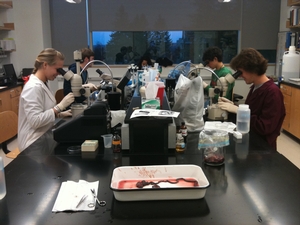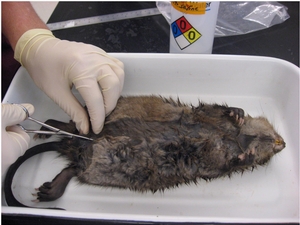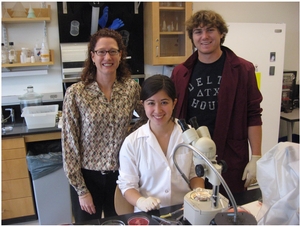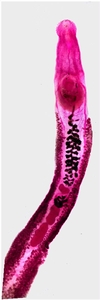Ashleigh B. Smythe
Scholar-in-Residence
Hamilton College
Hygiene hypothesis
The hygiene hypothesis suggests that the rise of autoimmune diseases in developed nations is due to improved sanitation and subsequent reduction of internal parasites of humans. An increasing body of evidence suggests that many intestinal parasites manipulate their host's immune system in order to reduce the immune response that is mounted against them. Without our intestinal parasites to down-regulate the immune response, humans may now be more prone to autoimmune diseases such as inflammatory bowl disease, asthma, lupus, and type 1 diabetes. My students and I are collaborating with Hamilton's animal physiologist, Dave Gapp, to use the mouse nematode, Heligmosomoides bakeri, and a chemically-induced model of early type 1 diabetes to explore the effect of intestinal worms on this important autoimmune disease.
Helminth Parasites of Muskrats
Muskrats, with their semi-aquatic lifestyle and omnivorous feeding habits, are ideal hosts for the study of parasite community ecology. My students and I are surveying the parasitic worms of muskrats in central New York. In the first year of the study, we found 12 species of parasites, including 5 adult digenetic trematodes, 2 adult and 2 larval cestodes, 2 adult nematodes, and 1 larval acanthocephalan. We are continuing the study for the 2011/2012 winter trapping season and are beginning to use molecular data to address questions of species identity and diversity among several of the trematode species.








